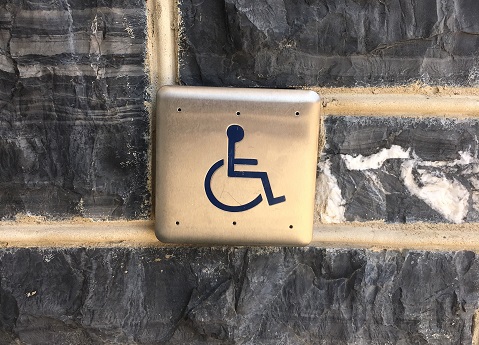
Updated March 2023
 Libraries have many reasons to create accessible facilities to visitors with a wide range of abilities and disabilities, including legal requirements, policy guidelines, and a professional focus on equity and inclusion. At a minimum, all US libraries are required to comply with the Americans with Disabilities Act (ADA), which requires that structural barriers in libraries be removed or remediated to allow people with disabilities to access spaces.
Libraries have many reasons to create accessible facilities to visitors with a wide range of abilities and disabilities, including legal requirements, policy guidelines, and a professional focus on equity and inclusion. At a minimum, all US libraries are required to comply with the Americans with Disabilities Act (ADA), which requires that structural barriers in libraries be removed or remediated to allow people with disabilities to access spaces.
The American Library Association’s Library Services for People with Disabilities Policy declares that “Libraries should use strategies based upon the principles of universal design to ensure that library policy, resources and services meet the needs of all people.” Universal design for libraries goes beyond meeting the baseline guidelines for accessibility as required by the ADA. This area of ongoing development may also be called "inclusive design" or "accessible design." The resources on this page provide guidance and examples of universal design in public spaces and/or specific to libraries.
Members of ACRL interested in this topic may wish to join the Universal Accessibility Interest Group, an online ALA Connect Community for discussing issues of library accessibility, services to people with disabilities, events, and calls for proposals.
Universal Design (UD) is defined as “the design of products and environments to be usable by all people, to the greatest extent possible, without the need for adaptation or specialized design.” In the late 1990s a team of UD experts at NC State University developed a set of seven principles that are in general use today (Center for Universal Design, 1997). These are:
The Center for Universal Design (1997). The Principles of Universal Design, Version 2.0. Raleigh, NC: North Carolina State University. Retrieved from: https://universaldesign.ie/what-is-universal-design/the-7-principles/
Accessible and universal design for libraries is a growing area of scholarship. These articles provide advice, make an ethical case for universal design, and/or assess library accessibility for people with disabilities:
The Americans with Disabilities Act, first passed in 1990 and renewed with updates in 2010, sets baseline requirements for the accessibility of public buildings, including libraries.
Several blog posts and LibGuides provide context-specific information on accessible design for libraries of all types:
The following national centers and clearinghouses provide reliable and relevant information online for accessible, inclusive, and universal design:
These highly recommended books are specific to universal design for library and/or college buildings:
Recent general-context books and reports on universal, inclusive, and accessible design: